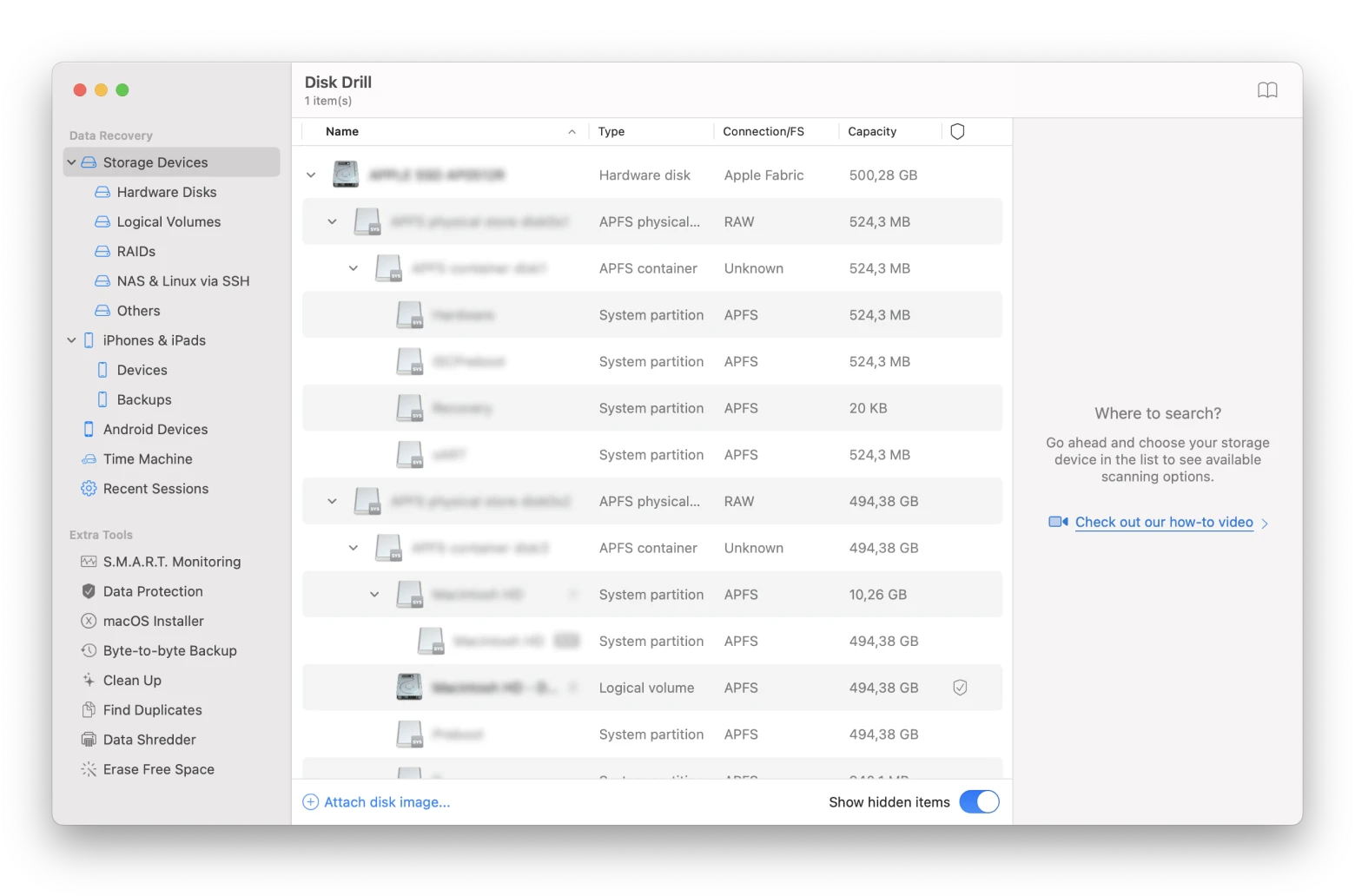How to fix Mac folder with a question mark
If you’ve ever seen a flashing folder with a question mark when starting your Mac, you know it’s a sign something’s off. This usually means your Mac can’t find its startup disk or there’s no macOS installed. Sometimes the folder appears briefly and your Mac boots up normally, but other times it just sits there, leaving you stuck.
If this sounds familiar, don’t worry. It’s often a simple issue with your Mac’s startup settings, and I’ve got a few quick fixes to help you get things working again. Let’s sort it out.
Fix 1: Check startup system settings
Make sure your Mac is using the right startup disk by going to System Settings via the Apple menu. Click General > Startup Disk, and you’ll see available disks to use for startup.

Make sure the right one is selected (usually, it’s Macintosh HD) and if any changes need to be made, select the right disk and click Restart.
Fix 2: Reset NVRAM
NVRAM is a type of memory that retains data without power supply. That includes basic booting info, so resetting it can help solve the flashing question mark folder issue if it appears for a brief moment and your Mac proceeds to boot.
To reset NVRAM, simply turn off the MacBook by clicking the Apple menu and selecting Shut Down. Then power your Mac back up and immediately press Option + Command + P + R. Release the keys after about 20 seconds.
If you want to try and fix the question mark folder on your own, let’s look at a few more of the available solutions.
Fix 3: Diagnose in Recovery mode
To diagnose the issue and try to fix it with built-in Mac app Disk Utility, you need to load your laptop in Recovery mode and run the app. Here’s how to do that:
As your screen is stuck on the question mark folder, press and hold the power button until your device shuts down. Next, turn your Mac back on and press and hold Command + R. This should take you to Mac Recovery mode.
There, select Disk Utility in the pop-up window on your screen. In the app, click First Aid.

In the appearing window, select your startup disk and run First Aid to see if the app can find and repair any damage.

If Disk Utility ends up unable to fix the error causing your startup disk mistake, there are a few other steps you can take. You can try to format your startup disk, reinstall macOS, or use Time Machine to return to a backed up version of your disk – proceed with caution as formatting your disk and reinstalling the OS will result in loss of data (your disk will be wiped) and using Time Machine will revert your Mac to a previously recorded image, which also means you will lose data on your Mac.
If your startup disk does not show up in Disk Utility at all, you need to take it to service.
Fix 4: Format Startup disk & reinstall macOS
If Disk Utility is unable to resolve the issue with the disk, you might need to format it and install Mac OS from scratch.
This process will erase all data on the disk, so take your Mac to service if you need the data restored and don’t have backups.
To start the formatting, load your Mac in Recovery mode and open Disk Utility as guided in the previous section.
- Select Macintosh HD and click Erase.
- In the pop-up window you’ll see an option to change the disk name and format.
- Confirm the action by pressing Erase Volume Group (or Erase). This will remove all data from your hard drive.
Now, to use this disk as a startup disk for your Mac, you need to reinstall macOS on it.
To do that, open your utilities window in the Recovery mode and select Reinstall macOS Big Sur (by default, the OS is set to the one you had previously installed). Do not close the lid of your Mac or put it to sleep during the installation.
Fix 5: Restore files with Disk Drill
After you were forced to erase your startup disk, you might need some of those files back. I prefer Disk Drill. It is an excellent file recovery app that you can use to restore lost files and data. Run the app to locate and restore files.

Since your files are not actually deleted but the path to them is erased, apps like Disk Drill can restore the files as long as no new information has been recorded on top of them on your disk. This means the sooner you run the app after factory reset or disk erase, the better the chances to recover your files.
Fix 6: Backup your data
As you can see, an unexpected error can lead to loss of data that can be tricky to recover and sometimes not possible to recover at all. This means backing up important data regularly is vital in your day-to-day digital life.
To back up your data, you can store important files in cloud storages and you can back up your Mac on an external storage using the built-in app Time Machine.
To use Time Machine, go to Apple menu > System Settings > General > Time Machine.
Once in the app, select your external storage disk.
If you want to reduce the size of your Time Machine image, clean up unnecessary files using CleanMyMac X. The app will optimize your Mac by cleaning cache and unnecessary files, locating old large files for you to review, removing local copies of email attachments, and even thinning your Time Machine snapshot.

I am not a fan of Time Machine. My favorite method for backups is Get Backup Pro. This app offers a variety of tools for your backups, including simple copy, cloning, incremental backups, versions. With Get Backup Pro, you can back up your data and restore it on any Mac, not just your own.
 Get Backup Pro allows you to handpick the files to back up, compress your backup, sync folders, and even schedule your backups.
Get Backup Pro allows you to handpick the files to back up, compress your backup, sync folders, and even schedule your backups.
Quick recap
Now you know that a Mac screen with a folder with a question mark on it means your computer can’t find a bootable disk. Sometimes it’s a minor error that can be easily fixed with an NVRAM reset or a Disk Utility First Aid scan, other times the problem will require disk formatting and macOS reinstall.
Erasing your startup disk and reinstalling macOS will result in data loss on your computer. Use Disk Drill to recover some of the lost files and data. To prevent data loss in the future, choose a backup option that works best for you – cloud storage, Time Machine, Get Backup Pro, etc. – and make copies of your important files and documents, as well as system settings.
You can get CleanMyMac X, Disk Drill, and Get Backup Pro that I've mentioned in this article with a Setapp subscription, so if you have one already, try these apps out and if not – it’s time to jump on board and sign up for a free trial!





